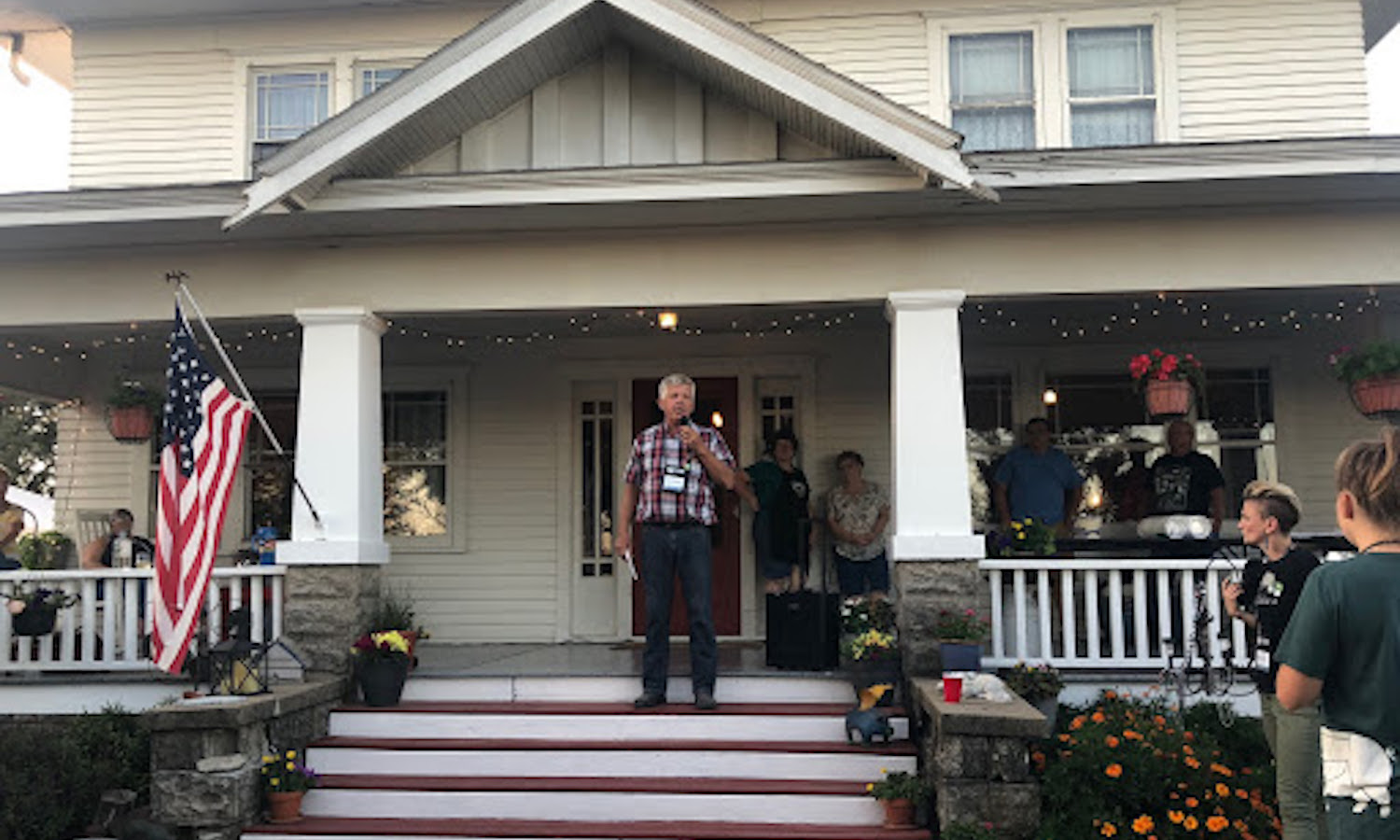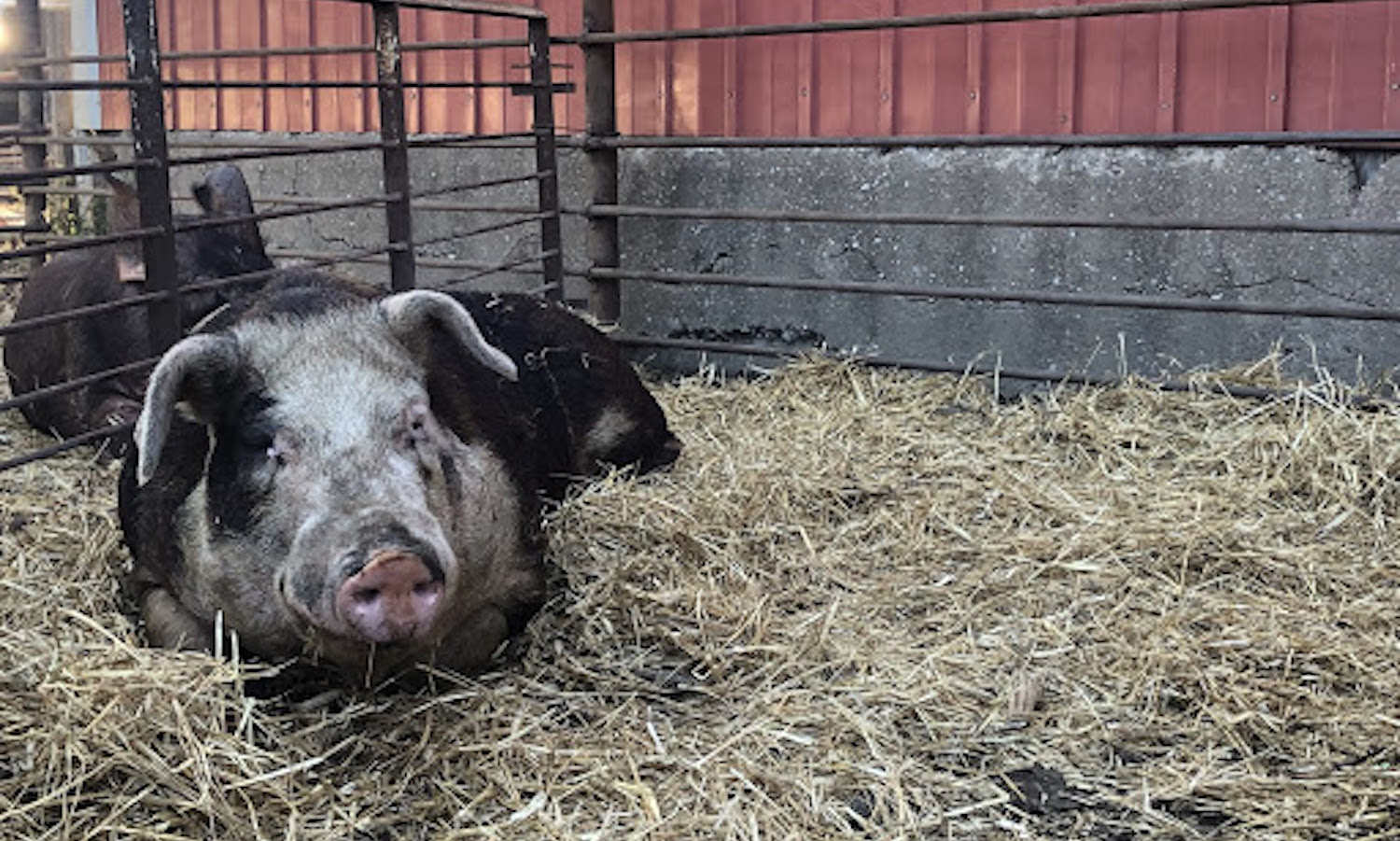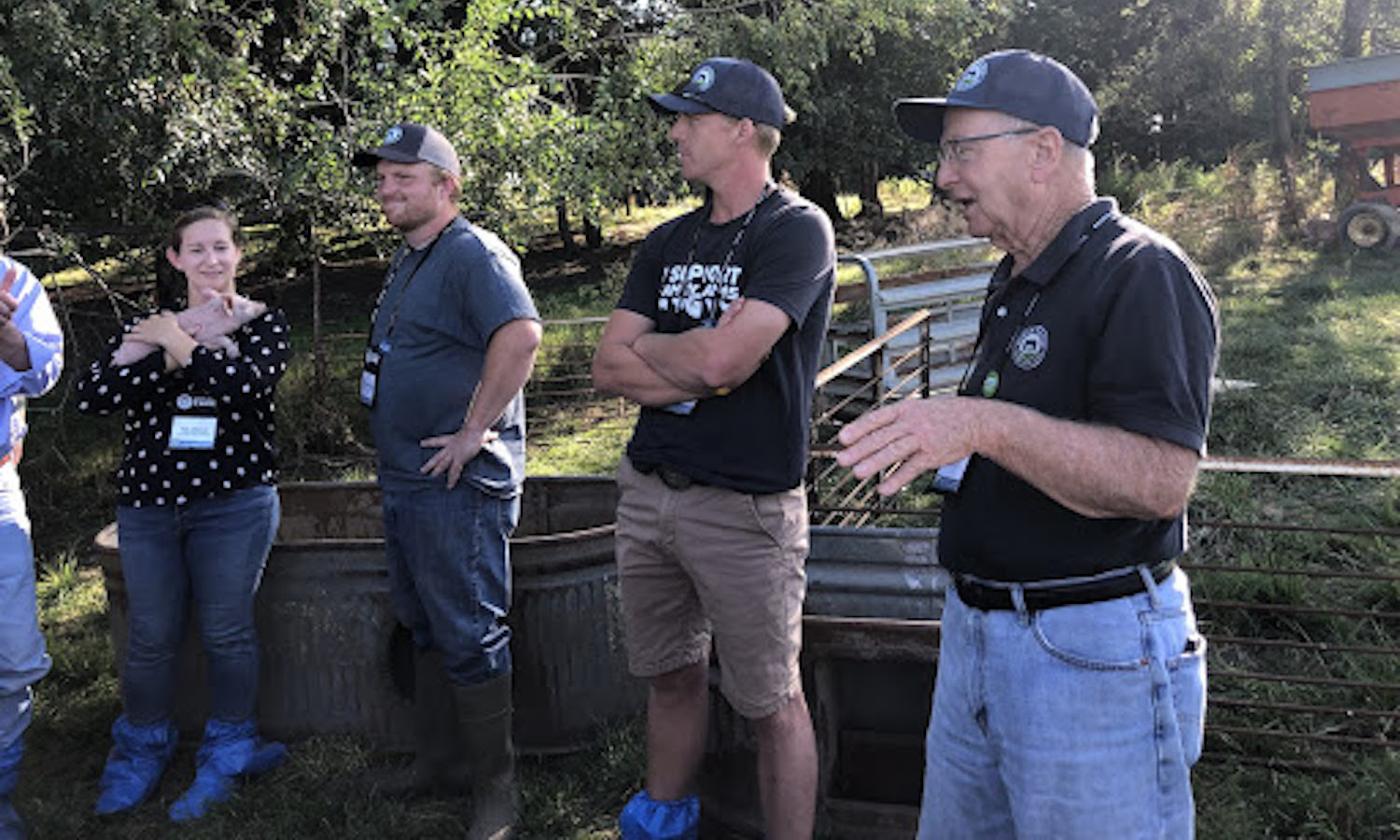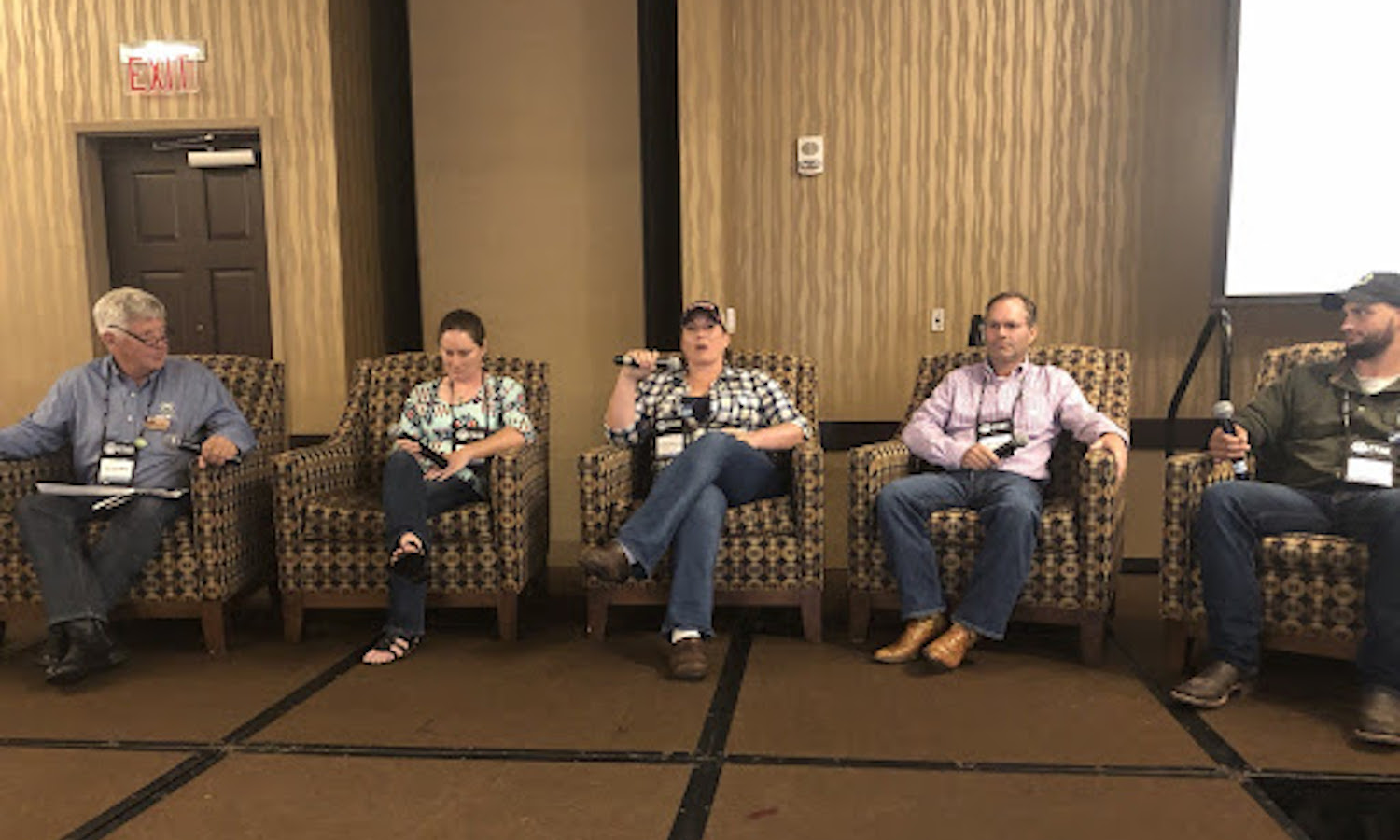The 21st Annual Niman Ranch Farmer Appreciation Weekend in Des Moines, Iowa focused on resilience for family farmers. Niman Ranch hosted customers, chefs, nonprofit workers, and media for a hog farm tour and education summit prior to their annual farmer dinner on September 6th and 7th, 2019.
Farmers in the Midwest faced unprecedented challenges over the last year including record-breaking cold winter temperatures and massive flooding during the planting season.
“The general profitability is pretty rough in agriculture right now,” Jason Knutson, a sixth-generation farmer from South Dakota, tells Food Tank. “I can pretty much say I wouldn’t be in the hog business if it weren’t for Niman Ranch.”
Guests learned about Niman Ranch hogs’ high standards of care through a tour of Ron Mardesen’s family farm, A-Frame Acres in Elliott, Iowa—including spacious farrowing huts, deeply bedded hoop barns, and feed mills using corn grown on the farm. The day ended with a pig roast on the Mardesen family lawn, serving Niman Ranch pork, piles of heirloom tomatoes, and pies contributed by the local Elliott community.

Mardesen’s family has farmed since his great-great-grandparents came to Iowa from Denmark after the Civil War, and now, three generations are at work on A-Frame Acres. “My goal is to leave as small a carbon footprint as possible,” Mardesen says. “We use corn stalks for bedding and then use that to compost, which we haul back out on the field. The livestock are outside as much as possible, so we have natural ventilation and natural disinfectants for the soil. We let the animals be animals the way Mother Nature intended.”
His partnership with Niman Ranch allows for this freedom to focus on raising his hogs humanely and sustainably, Mardesen tells the group. The 740 independent farmers in Niman Ranch’s network, whose farms average 200 acres in size, enjoy a guaranteed contract with a premium over the market price and a floor price tied to the cost of inputs like feed and fuel.

With median U.S. farm income earned by farm households estimated at negative US$1,840 in 2018, this support is vital. Almost 31 million acres of U.S. farmland were lost to development from 1992 to 2012—nearly the equivalent of all the farmland in Iowa. And today, 75 percent of all agricultural sales are coming from just five percent of farms.
For Niman Ranch, the key is to support families. “Resilience is about continuity across generations,” says Chris Oliviero, General Manager at Niman Ranch.
Seventy percent of Niman Ranch farmers/ranchers have multiple generations working together on the land. And the Niman Ranch Next Generation Foundation seeks to eliminate college tuition as a barrier for young farmers and ranchers in the network. The scholarship fund has dispersed more than US$500,000 to the children of Niman Ranch farmers who seek to use their education to continue rural enhancement.

At the education summit, guests were encouraged to think differently about agricultural systems and challenge the status quo.
“Everyone faces peril and pleasure when they make decisions about food,” says The New Food Economy Editor Kate Cox. “What consumers say they care about is completely different from the decisions they make in the grocery store.” Panelists discussed the rise of pasture-raised meat, lost meaning in meat labels, and who is (or should be) responsible for calling out humane washing and greenwashing in meat products.
The media panel asked what the standard should be for practices that have existed for a long time, but a term that’s only recently rising in popularity: regenerative agriculture. While there are several efforts in play to create a label, regenerative agriculture “has this kind of Wild West feel to it that sustainability did years ago. Everyone wants a piece of it,” says Twilight Greenaway, author and contributing editor at Civil Eats.
In the event’s first-ever farmer panel, Niman Ranch farmers/ranchers shared candidly about juggling day jobs, battling extreme weather, and finding capital to increase efficiency. Farmers also emphasized the value in their partnership with Niman Ranch, “If we were trying to do this in the commodity market, there’s no way. We’re too small,” according to Kirsten Eckerman of Quit Yer Belly Achin’ Acres in Wisconsin.

Many farmers expressed their frustration with the public perception of agriculture. “Don’t believe everything you see on the internet. Farming is not cookie-cutter… Farming is a culture and community and sometimes we’re not great at expressing what we do, because we do it every day,” says Eckerman.
“A lot of people think that farmers are just out to make money, just produce something and be done,” Thomas Parsons, one of this year’s scholarship recipients, tells Food Tank. “In reality, it’s the complete opposite… What we do is a way of life that we care about, and we’re doing it so we can feed the world.”
The weekend culminated in the annual farmer appreciation dinner, which hosted nearly 600 guests including many farm families. Five award-winning women chefs prepared five courses, each using Niman Ranch pork. Journalists shared family-style plates with young scholarship recipients, and grocery pork buyers sat beside second, third, and fourth-generation hog farmers. The organizers, after encouraging guests throughout the day to sit with farm families at dinner, emphasized the power in making these connections within the system.
The dinner’s conclusion focused on the strong sense of community within the network, inviting 39 scholarship recipients to the stage in front of longtime friends, colleagues, and family members to accept more than US$186,000 in funds—a record-breaking year for the Foundation. The awards include a new Women in Food Scholarship, granted this year to Summer Worthington to pursue a career in the food and beverage industry.
“I feel like we just had a big family reunion,” shares Chef Charleen Badman of FnB in Phoenix, Arizona. “We’re all trying to do the same thing.”













